
Leading From the Emerging Future: From Ego-System to Eco-System Economies
by
Otto Scharmer
and
Katrin Kaufer
Published 14 Apr 2013
As we see connections strengthen between humans and machines and between machines and machines, a question arises: Where is this journey taking us? WHY THE FUTURE DOESN’T NEED US One scenario that has been discussed in this context is the one that the movie The Matrix popularized: a future ruled by machines. A few years after the Matrix trilogy came out, Bill Joy, then chief scientist at Sun Microsystems, reminded us in his brilliant article “Why the Future Doesn’t Need Us” that rule by machines isn’t just a movie fiction: “Our most powerful twenty-first-century technologies are threatening to make humans an endangered species.”
…
Jürgen Habermas, The Theory of Communicative Action, vol. 1: Reason and the Rationalization of Society (Boston: Beacon Press, 1984; Frankfurt: Suhrkamp Verlag, 1981). 46. Jeremy Rifkin, The Third Industrial Revolution: How Lateral Power Is Transforming Energy, the Economy, and the World (New York: Palgrave Macmillan, 2011). 47. Bill Joy, “Why the Future Doesn’t Need Us,” Wired 8, no. 4 (April 2000), www.wired.com/wired/archive/8.04/joy.html (accessed December 9, 2012). 48. Erik Rauch, “Productivity and the Workweek,” http://groups.csail.mit.edu/mac/users/rauch/worktime (accessed December 9, 2012); John de Graaf, “Affluenza Cure Calls for Political Action: Different Standards for Workweek an Opportunity,” special to the Denver Post, October 29, 2001. 49.
…
See Capital Financial crisis, deeper structural problem of our current, 100 Financial crisis of 2007–2008, 8, 9, 50, 93, 97 Financial disconnect, 46 Financial mechanisms, function of, 97 Financial sector, 98–99 Financial system collapse of, 27 as too efficient, 95 Fisher, Eileen, 227 Flowers, Betty Sue, 18 Food, shifting the field of, 223–225 Food industry, 10 Football, total, 124–125 Forster, Norbert, 206–207 France, Chernobyl disaster and, 35 Free-market model, 13, 14f, 52t, 54, 74t, 226t Friedman, Thomas, 53 Froman, Michael, 10 Fukushima Daiichi nuclear disaster, 28 Fundamentalism, 32–33 Future examples of sensing what wants to emerge, 248–252 exploring the future by doing, 188 how to lead from the emerging, 3–4 noticing the crack to the field of the, 171 relinking leadership with the emerging, 110–115 seeing our, 115 turning yourself into a vehicle for the, 167–168 “Why the Future Doesn’t Need Us,” 105 See also specific topics Future possibilities opening up to, 29 (see also Presencing) tension between current reality and, 152–153 Gaddafi, Muammar, 28 Galtung, Johan, 27 Gandhi, Mohandas Karamchand (Mahatma), 62, 118, 253 Generative listening, 147, 154 Genetically modified organisms (GMOs), 133 Germany, 12–13, 82, 132, 133, 135, 155, 156, 192.

Our Final Invention: Artificial Intelligence and the End of the Human Era
by
James Barrat
Published 30 Sep 2013
I’ve read almost every word Kurzweil has published, and listened to every available audio recording, podcast, and video. In 1999 I interviewed him at length for a documentary film that was in part about AI. I know what he’s written and said about the dangers of AI, and it isn’t much. Surprisingly, however, he was indirectly responsible for the subject’s most cogent cautionary essay—Bill Joy’s “Why the Future Doesn’t Need Us.” In it, Joy, a programmer, computer architect, and the cofounder of Sun Microsystems, urges a slowdown and even a halt to the development of three technologies he believes are too deadly to pursue at the current pace: artificial intelligence, nanotechnology, and biotechnology. Joy was prompted to write it after a frightening conversation in a bar with Kurzweil, followed by his reading The Age of Spiritual Machines.
…
Per dollar spent: Kurzweil, Ray, The Age of Spiritual Machines (New York: Viking Penguin, 1999), 101–105. 9: THE LAW OF ACCELERATING RETURNS Computing is undergoing: King, Rachael, “IBM training computer chip to learn like a human,” SFGate.com, November 7, 2011, http://articles.sfgate.com/2011-11-07/business/30371975_1_computers-virtual-objects-microsoft (accessed January 5, 2012). What, then, is the Singularity: Kurzweil, Ray, The Singularity Is Near, When Humans Transcend Biology (New York: Viking Press, 2005), 7. Consider J. K. Rowling’s Harry Potter: Ibid. 4. Surprisingly, however, he was indirectly responsible: Joy, Bill, “Why the Future Doesn’t Need Us,” Wired, August 4, 1999. But now, with the prospect of human-level computing power: Ibid. Book jacket flap copy for The Age of Spiritual Machines (1999). And as scholar: Grassie, William, “H-: Millennialism at the Singularity: Reflections on Metaphors, Meanings, and the Limits of Exponential Logic,” Metanexus, August 9, 2001, http://www.metanexus.net/essay/h-millennialism-singularity-reflections-metaphors-meanings-and-limits-exponential-logic (accessed December 10, 2011).
…
Three Mile Island tightly coupled systems Thrun, Sebastian transhumans transistors Traveller Trillion Credit Squadron Turing, Alan Turing machine Turing test Tversky, Amos two-minute problem 2001: A Space Odyssey Ulam, Stanislaw utility function Vassar, Michael Vicarious Systems Vinge, Vernor violence Virginia Tech Massacre Virtually You (Aboujaoude) voice recognition von Neumann, John Voss, Peter Wallach, Wendall Wall Street Warwick, Kevin Washington Post Watson weapons, see military Whitby, Blay “Why the Future Doesn’t Need Us” (Joy) Wired for Thought (Stibel) Wissner-Gross, Alexander D. Wolfram, Stephen Wozniak, Steve You Are Not a Gadget: A Manifesto (Lanier) Yudkowsky, Eliezer Yudkowsky, Yehuda Zeitgist ’06 zero day vulnerabilities Zeroth Law Zeus malware About the Author James Barrat is a documentary filmmaker who’s written and produced films for National Geographic, Discovery, PBS, and many other broadcasters in the United States and Europe.

Rise of the Robots: Technology and the Threat of a Jobless Future
by
Martin Ford
Published 4 May 2015
Under the purview of the NNI, virtually all the nanotechnology funding went to research based on relatively traditional techniques in chemistry and materials science; the science of molecular assembly and manufacturing ended up with little or nothing. A number of factors were behind the sudden shift away from molecular manufacturing. In 2000, Sun Microsystems co-founder Bill Joy wrote an article for Wired magazine entitled “Why the Future Doesn’t Need Us.” In his article, Joy highlighted the possibly existential dangers associated with genetics, nanotechnology, and artificial intelligence. Drexler himself had discussed the possibility of out-of-control, self-replicating molecular assemblers that might use us—and just about everything else—as a kind of feedstock.
…
K. Eric Drexler, Radical Abundance: How a Revolution in Nanotechnology Will Change Civilization (New York: PublicAffairs, 2013), p. 205. 18. Ibid. 19. K. Eric Drexler, Engines of Creation: The Coming Era of Nanotechnology (New York: Anchor Books, 1986, 1990), p. 173. 20. Bill Joy, “Why the Future Doesn’t Need Us,” Wired, April 2000, http://www.wired.com/wired/archive/8.04/joy.html. 21. “Nanotechnology: Drexler and Smalley Make the Case For and Against ‘Molecular Assemblers,’” Chemical and Engineering News, December 1, 2003, http://pubs.acs.org/cen/coverstory/8148/8148counterpoint.html. 22. Institute of Nanotechnology website, http://www.nano.org.uk/nano/nanotubes.php. 23.
…
See value-added tax (VAT) vending machines, intelligent, 17–19 Vietnam, 11, 225 Vinge, Vernor, 233 virtual immigration, 116–117 Vision Robotics, 23–24 vision system, robotic three-dimensional, 1–5 visual recognition, cloud robotics and, 21 von Drehle, David, 191 Vonnegut, Kurt, 32 von Neumann, John, 80, 233 wages decline in real average, 34–35 deflation and, 216–217 productivity and, xi, 33, 35–38, 38n stagnant, 34–38 Walgreens, 17 Wall Street, automated trading algorithms, 113–115 Wall Street Journal (newspaper), 14, 39, 148 Walmart, 19, 20, 54, 201–202 warehouses, online retailers and automated, 16–17 Washington Post (newspaper), xi, 107, 118, 151 Watson (IBM), 20, 96–104, 118, 229–230 in the cloud, 104–107 medical applications, 102–103, 147–148 “WatsonPaths,” 102 wealth, global tax on, 275 Weerapana, Akila, 37 Western Governor’s University, 138 WhatsApp, 175, 176 white-collar jobs automation of, 85–86, 105–106, 126–128 offshoring and, 115–121 See also knowledge-based jobs White House Council of Economic Advisors, 116 “Why the Future Doesn’t Need Us” (Joy), 243–244 Wiener, Norbert, 31–32, 33–34, 63 Wii video game console, 3–4 Wikipedia, 100, 137, 263 Wilczek, Frank, 229 Willow Garage, Inc., 6, 7 winner-take-all distribution, Internet sector and, 76–78 Winner Take All Politics (Hacker & Pierson), 57 Wired (magazine), 85, 243 wisdom of crowds function, 227 women, labor force participation and, 41–42 work, number of hours worked, 281 workers/workforce college-educated, 48–49, 120–121, 126–128 as consumers, 193–194, 196–198, 221–222 declining participation in, 41–43 effect of guaranteed income on, 268–270 fast food industry, 12–16 graying, 220–223, 224 relationship with machines, xii technological progress and, x technology and wages for unskilled, 208–209 threat of automation for, xiv–xv See also labor WorkFusion, 95–96, 123 Wright, Wilbur, 66 writing software, 84–86 Xbox 360 game console, 4 Xiaobo Zhang, 225 Yemen, 46 YouTube, 5, 175, 176
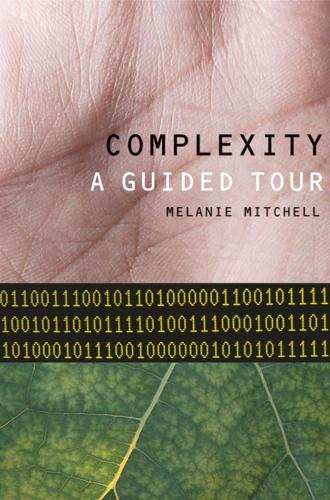
Complexity: A Guided Tour
by
Melanie Mitchell
Published 31 Mar 2009
In 1999, computer scientists Ray Kurzweil and Hans Moravec celebrated the possibility of super-intelligent self-reproducing robots, which they believe will be built in the near future, in their respective nonfiction (but rather far-fetched) books The Age of Spiritual Machines and Robot. In 2000 some of the possible perils of self-reproducing nano-machines were decried by Bill Joy, one of the founders of Sun Microsystems, in a now famous article in Wired magazine called “Why the Future Doesn’t Need Us.” So far none of these predictions has come to pass. However, complex self-reproducing machines may soon be a reality: some simple self-reproducing robots have already been constructed by roboticist Hod Lipson and his colleagues at Cornell University. John von Neumann It is worth saying a few words about von Neumann himself, one of the most important and interesting figures in science and mathematics in the twentieth century.
…
Cambridge, MA: MIT Press, 1980, pp. 212–213. “their respective nonfiction”: Kurzweil, R., The Age of Spiritual Machines: When Computers Exceed Human Intelligence. New York: Viking, 1999; and Moravec, H., Robot: Mere Machine to Transcendent Mind. New York: Oxford University Press, 1999. “now famous article in Wired”: Joy, B., Why the future doesn’t need us. Wired, April 2000. “some simple self-reproducing robots”: Zykov, V. Mytilinaios, E., Adams, B., and Lipson, H., Self-reproducing machines. Nature, 435, 2005, pp. 163–164. “When his mother once stared rather aimlessly”: Macrae, N., John von Neumann. New York: Pantheon, 1992, p. 52. “the greatest paper on mathematical economics”: Quoted in Macrae, N., John von Neumann.
…
Trends in Genetics, 21 (5), 2005, pp. 289–297. Huxley, J. Evolution: The Modern Synthesis. New York, London: Harper & Brothers, 1942. Jeong, H., Tombor, B., Albert, R., Oltvai, Z. N., and Barbási, A.-L. The large-scale organization of metabolic networks. Nature, 407, 2000, pp. 651–654. Joy, B. Why the future doesn’t need us. Wired, April 2000. Kadanoff, Leo P. Chaos: A view of complexity in the physical sciences. In From Order to Chaos: Essays: Critical, Chaotic, and Otherwise. Singapore: World Scientific, 1993. Kauffman, S. A. The Origins of Order. New York: Oxford University Press, 1993. Kauffman, S.

The Singularity Is Near: When Humans Transcend Biology
by
Ray Kurzweil
Published 14 Jul 2005
CHAPTER EIGHT The Deeply Intertwined Promise and Peril of GNR We are being propelled into this new century with no plan, no control, no brakes....The only realistic alternative I see is relinquishment: to limit development of the technologies that are too dangerous, by limiting our pursuit of certain kinds of knowledge. —BILL JOY, "WHY THE FUTURE DOESN'T NEED US" Environmentalists must now grapple squarely with the idea of a world that has enough wealth and enough technological capability, and should not pursue more. —BILL MCKIBBEN, ENVIRONMENTALIST WHO FIRST WROTE ABOUT GLOBAL WARMING1 Progress might have been all right once, but it has gone on too long.
…
As it turned out, Joy was interested in a completely different issue, specifically the impending dangers to human civilization from three emerging technologies I had presented in the book: genetics, nanotechnology, and robotics (GNR, as discussed earlier). My discussion of the downsides of future technology alarmed Joy, as he would later relate in his now-famous cover story for Wired, "Why the Future Doesn't Need Us."8 In the article Joy describes how he asked his friends in the scientific and technology community whether the projections I was making were credible and was dismayed to discover how close these capabilities were to realization. Joy's article focused entirely on the downside scenarios and created a firestorm.
…
CLARKE A Panoply of Criticisms I n The Age of Spiritual Machines, I began to examine some of the accelerating trends that I have sought to explore in greater depth in this book. ASM inspired a broad variety of reactions, including extensive discussions of the profound, imminent changes it considered (for example, the promise-versus-peril debate prompted by Bill Joy's Wired story, "Why the Future Doesn't Need Us," as I reviewed in the previous chapter). The response also included attempts to argue on many levels why such transformative changes would not, could not, or should not happen. Here is a summary of the critiques I will be responding to in this chapter: ·The "criticism from Malthus": It's a mistake to extrapolate exponential trends indefinitely, since they inevitably run out of resources to maintain the exponential growth.

The Filter Bubble: What the Internet Is Hiding From You
by
Eli Pariser
Published 11 May 2011
Moreover, because the transformations applied to your data are often opaque, it’s not always clear exactly what decisions are being made on your behalf, by whom, or to what end. This matters plenty when we’re talking about information streams, but it matters even more when this power is infused into our sensory apparatus itself. In 2000, Bill Joy, the Sun Microsystems cofounder, wrote a piece for Wired magazine titled “Why the Future Doesn’t Need Us.” “As society and the problems that face it become more and more complex and machines become more and more intelligent,” he wrote, “people will let machines make more of their decisions for them, simply because machine-made decisions will bring better results than man-made ones.” That may often be the case: Machine-driven systems do provide significant value.
…
story_id=7904258. 209 at least sixteen different ways: Gary Hayes, “16 Top Augmented Reality Business Models,” Personalize Media (Gary Hayes’s blog), Sept. 14, 2009, accessed Dec. 17, 2010, www.personalizemedia.com/16-top-augmented-reality-business-models. 210 solve problems for people: Chris Coyne, interview with author, New York, NY, Oct. 6, 2010. 211 “reality” is “one of the few words”: Vladimir Nabokov, Lolita (New York: Random House, 1997), 312. 213 powering the marketing campaigns: David Wright et al., Safeguards in a World of Ambient Intelligence (London: Springer, 2008), 66, accessed through Google eBooks, Feb. 8, 2011. 214 “machines make more of their decisions”: Bill Joy, “Why the Future Doesn’t Need Us,” Wired (Apr. 2000) accessed Dec. 17, 2010, www.wired.com/wired/archive/8.04/joy.html. Chapter Eight: Escape from the City of Ghettos 217 “the nature of his own person”: Christopher Alexander et al., A Pattern Language (New York: Oxford University Press, 1977), 8. 217 “Long Live the Web” Sir Tim Berners-Lee, “Long Live the Web: A Call for Continued Open Standards and Neutrality,” Scientific American, Nov. 22, 2010. 219 “need to address the core issues”: Bill Joy, phone interview with author, Oct. 1 2010. 220 ideal nook for kids: Alexander et al., A Pattern Language, 445, 928–29. 220 “distinct pattern language”: Ibid., xvi. 220 “city of ghettos”: Ibid., 41–43. 221 “dampens all significant variety”: Ibid., 43. 221 “move easily from one to another”: Ibid., 48. 221 “support for his idiosyncrasies”: Ibid. 222 “psychological equivalent of obesity”: danah boyd.
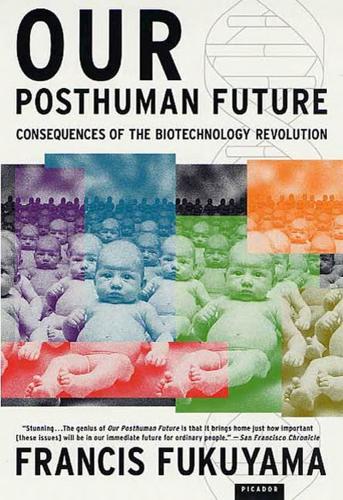
Our Posthuman Future: Consequences of the Biotechnology Revolution
by
Francis Fukuyama
Published 1 Jan 2002
CHAPTER 1: A TALE OF TWO DYSTOPIAS 1 Martin Heidegger, Basic Writings (New York: Harper and Row, 1957), p. 308. 2 Peter Huber, Orwell’s Revenge: The 1984 Palimpsest (New York: Free Press, 1994), pp. 222–228. 3 Leon Kass, Toward a More Natural Science: Biology and Human Affairs (New York: Free Press, 1985), p. 35. 4 Bill Joy, “Why the Future Doesn’t Need Us,” Wired 8 (2000): 238–246. 5 Tom Wolfe, “Sorry, but Your Soul Just Died,” Forbes ASAP, December 2, 1996. 6 Letter to Roger C. Weightman, June 24, 1826, in The Life and Selected Writings of Thomas Jefferson, Thomas Jefferson (New York: Modern Library, 1944), pp. 729–730. 7 Francis Fukuyama, The End of History and the Last Man (New York: Free Press, 1992). 8 Ithiel de Sola Pool, Technologies of Freedom (Cambridge, Mass.: Harvard/Belknap, 1983). 9 On this point, see Leon Kass, “Introduction: The Problem of Technology,” in Technology in the Western Political Tradition, ed.
…
The Black–White Test Score Gap. Washington, D.C.: Brookings Institution Press, 1998. Jensen, Arthur R. “How Much Can We Boost IQ and Scholastic Achievement?” Harvard Educational Review 39 (1969): 1–123. John Paul II. “Message to the Pontifical Academy of Sciences.” October 22, 1996. Joy, Bill. “Why the Future Doesn’t Need Us.” Wired 8 (2000): 238–246. Joynson, Robert B. The Burt Affair. London: Routledge, 1989. Juengst, Eric, and Michael Fossel. “The Ethics of Embryonic Stem Cells—Now and Forever, Cells Without End.” Journal of the American Medical Association 284 (2000): 3180–3184. Kamin, Leon.

Possible Minds: Twenty-Five Ways of Looking at AI
by
John Brockman
Published 19 Feb 2019
After my meeting with Yudkowsky, the first thing I did was try to interest my Skype colleagues and close collaborators in his warning. I failed. The message was too crazy, too dissident. Its time had not yet come. Only later did I learn that Yudkowsky wasn’t the original dissident speaking this particular truth. In April 2000, there was a lengthy opinion piece in Wired titled “Why the Future Doesn’t Need Us” by Bill Joy, co-founder and chief scientist of Sun Microsystems. He warned: Accustomed to living with almost routine scientific breakthroughs, we have yet to come to terms with the fact that the most compelling 21st-century technologies—robotics, genetic engineering, and nanotechnology—pose a different threat than the technologies that have come before.
…
See singularity Tegmark, Max, 76–87 AI safety research, 81 Asilomar AI Principles, 2017, 81, 84 background and overview of work of, 76–77 competence of superintelligent AGI, 85 consciousness as cosmic awakening, 78–79 general expectation AGI achievable within next century, 79 goal alignment for AGI, 85–86 goals for a future society that includes AGI, 84–86 outlook, 86–87 rush to make humans obsolescent, reasons behind, 82–84 safety engineering, 86 societal impact of AI, debate over, 79–82 Terminator, The (film), 242 three laws of artificial intelligence, 39–40 Three Laws of Robotics, Asimov’s, 250 threshold theorem, 164 too-soon-to-worry argument against AI risk, 26–27, 81 Toulmin, Stephen, 18–19 transhumans, rights of, 252–53 Treister, Suzanne, 214–15 Trolley Problem, 244 trust networks, building, 200–201 Tsai, Wen Ying, 258, 260–61 Turing, Alan, 5, 25, 35, 43, 60, 103, 168, 180 AI-risk message, 93 Turing Machine, 57, 271 Turing Test, 5, 46–47, 276–77 Tversky, Amos, 130–31, 250 2001: A Space Odyssey (film), 183 Tyka, Mike, 212 Understanding Media (McLuhan), 208 understanding of computer results, loss of, 189 universal basic income, 188 Universal Turing Machine, 57 unsupervised learning, 225 value alignment (putting right purpose into machines) Dragan on, 137–38, 141–42 Griffiths on, 128–33 Pinker on, 110–11 Tegmark on, 85–86 Wiener on, 23–24 Versu, 217 Veruggio, Gianmarco, 243 visualization programs, 211–13 von Foerster, Heinz, xxi, 209–10, 215 Vonnegut, Kurt, 250 von Neumann, John, xx, 8, 35, 60, 103, 168, 271 digital computer architecture of, 58 second law of AI and, 39 self-replicating cellular automaton, development of, 57–58 use of symbols for computing, 164–65 Watson, 49, 246 Watson, James, 58 Watson, John, 225 Watt, James, 3, 257 Watts, Alan, xxi Weaver, Warren, xviii, 102–3, 155 Weizenbaum, Joe, 45, 48–50, 105, 248 Wexler, Rebecca, 238 Whitehead, Alfred North, 275 Whole Earth Catalog, xvii “Why the Future Doesn’t Need Us” (Joy), 92 Wiener, Norbert, xvi, xviii–xx, xxv, xxvi, 35, 90, 96, 103, 112, 127, 163, 168, 256 on automation, in manufacturing, 4, 154 on broader applications of cybernetics, 4 Brooks on, 56–57, 59–60 control via feedback, 3 deep-learning and, 9 Dennett on, 43–45 failure to predict computer revolution, 4–5 on feedback loops, 5–6, 103, 153–54 Hillis on, 178–80 on information, 5–6, 153–59, 179 Kaiser on Wiener’s definition of information, 153–59 Lloyd on, 3–7, 9, 11–12 Pinker on, 103–5, 112 on power of ideas, 112 predictions/warnings of, xviii–xix, xxvi, 4–5, 11–12, 22–23, 35, 44–45, 93, 104, 172 Russell on, 22–23 on social risk, 97 society, cybernetics impact on, 103–4 what Wiener got wrong, 6–7 Wilczek, Frank, 64–75 astonishing corollary (natural intelligence as special case of AI), 67–70 astonishing hypothesis of Crick, 66–67 background and overview of work of, 64–65 consciousness, creativity and evil as possible features of AI, 66–68 emergence, 68–69 human brain’s advantage over AI, 72–74 information-processing technology capacities that exceed human capabilities, 70–72 intelligence, future of, 70–75 Wilkins, John, 275 wireheading problem, 29–30 With a Rhythmic Instinction to Be Able to Travel Beyond Existing Forces of Life (Parreno), 263–64 Wolfram, Stephen, 266–84 on AI takeover scenario, 277–78 background and overview of work of, 266–67 computational knowledge system, creating, 271–77 computational thinking, teaching, 278–79 early approaches to AI, 270–71 on future where coding ability is ubiquitous, 279–81 goals and purposes, of humans, 268–70 image identification system, 273–74 on knowledge-based programming, 278–81 purposefulness, identifying, 281–84 Young, J.

The Singularity Is Nearer: When We Merge with AI
by
Ray Kurzweil
Published 25 Jun 2024
Ultimately there is no fundamental reason why harmful nanobots would have an asymmetric advantage over well-designed defensive systems. The key is to ensure that good nanobots are deployed around the world before bad ones so that self-replication chain reactions can be detected and neutralized before they have a chance to get out of control. My friend Bill Joy’s 2000 essay “Why the Future Doesn’t Need Us” has an excellent discussion of nanotechnology risks, including the gray goo scenario.[54] Most nanotechnology experts consider a gray goo catastrophe to be unlikely, and so do I. Yet because it would be an extinction-level event, it is very important to keep these risks in mind as nanotechnology develops in the coming decades.
…
BACK TO NOTE REFERENCE 51 For more on the colorful range of terms like “blue goo” and “gray goo” that have sprung up to describe various nanotechnology scenarios, see Chris Phoenix, “Goo vs. Paste,” Nanotechnology Now, September 2002, http://www.nanotech-now.com/goo.htm. BACK TO NOTE REFERENCE 52 Freitas, “Some Limits to Global Ecophagy by Biovorous Nanoreplicators.” BACK TO NOTE REFERENCE 53 Bill Joy, “Why the Future Doesn’t Need Us,” Wired, April 1, 2000, https://www.wired.com/2000/04/joy-2. BACK TO NOTE REFERENCE 54 World Health Organization, “WHO Coronavirus Dashboard,” World Health Organization, accessed October 16, 2023, https://covid19.who.int. BACK TO NOTE REFERENCE 55 Miles Brundage et al., The Malicious Use of Artificial Intelligence: Forecasting, Prevention, and Mitigation (Oxford, UK: Future of Humanity Institute, February 2018), https://img1.wsimg.com/blobby/go/3d82daa4-97fe-4096-9c6b-376b92c619de/downloads/MaliciousUseofAI.pdf?
…
See also Google weak nuclear force, 96–97 weapons, 274–76, 280–82. See also nuclear weapons Weibel, Peter, 245 well-formed formulas (WFFs), 15 whole-brain emulation (WBE). See mind uploading whole genome sequencing, 2, 135, 189, 261 “Why the Future Doesn’t Need Us” (Joy), 277–78 Wikipedia, 38, 68, 168, 213, 232, 254 Wilson, James Q., 150 Windows 11, 160 wind power, 154, 173–74 costs, 157 worldwide electricity generation, 157, 158 WinSun, 188 Wired, 273 Wolfram, Stephen, 82–87, 331–32n Wolfram Physics Project, 86 work.

Dawn of the New Everything: Encounters With Reality and Virtual Reality
by
Jaron Lanier
Published 21 Nov 2017
To learn more about the original and evolving meanings of the term “mixed reality,” see the upcoming section called “Flags Planted,” starting on page 237. 3. Bill was one of the founders of Sun Microsystems, which used to be one of the Silicon Valley giants. He wrote a famous cautionary essay about the future of technology called Why the Future Doesn’t Need Us. Richard conceived the open-source movement, and you can read about how we argued in my book You Are Not a Gadget. Andy wrote the original Macintosh operating system. 4. Derived from the Greek haptikos, meaning “able to come into contact.” It was proposed as a word in English in Isaac Barrow’s 1683 Lectiones Mathematicae, but wasn’t used much until recently. 5.
…
visual quality of vocabulary of VR rooms and Virtual Reality: An Interview with Jaron Lanier (Kelly, Heilbrun, Stacks) virtual worlds term coined virtual X-ray glass vision visionary lectures visual cortex visual displays visual motion language visual programming vital sign monitoring Volkswagen von der Malsburg, Christoph von Neumann, John VPL Research branding business problems of consumer products and creation and funding of crew formed cultural legacy of decision to leave demos and parties experience described Eyephones films and patents and hardware and manufacturing and sales offices partnerships and president recruited software as heart of sound technology and Sun acquisition of virtual world software VR operator VR system Waldo (Muppet) Wall Street Journal War of the Worlds (radio show) Wasserman, Lew Watson, John B. Watts, Alan Watts Towers wealth concentration weightlessness weight loss Welles, Orson Wessel, David What Technology Wants (Kelly) white hats White Sands Missile Range Whole Earth Catalog Whole Earth Review Who Owns the Future (Lanier) Why the Future Doesn’t Need Us (Joy) Wiener, Norbert Wii WikiLeaks Wilde, Oscar Wild West Wilson, Andy Windows Wired Wizard of the Upper Amazon, The (Lamb) Wolfram, Stephen women dating and gaming and tech world and Won, Andrea Stevenson “world,” vs. “reality” world games world music World War II World Wide Web (WWW) Xanadu digital network Xbox Xerox PARC Xiao, Jianxiong You Are Not a Gadget (Lanier) YouTube Zachary, George Zhang, Zhengyou Zimmerman, Tom zither Zombie Apocalypse Zuckerberg, Mark Also by Jaron Lanier Who Owns the Future?

Machines of Loving Grace: The Quest for Common Ground Between Humans and Robots
by
John Markoff
Published 24 Aug 2015
In a capitalist economy, if artificial intelligence technologies improve to the point that they can replace new kinds of white-collar and professional workers, they will inevitably be used in that way. That lesson carries forward in the differing approaches of the software engineers, AI researchers, roboticists, and hackers who are the designers of these future systems. It should be obvious that Bill Joy’s warning that “the future doesn’t need us” is just one possible outcome. It is equally apparent that the world transformed by these technologies doesn’t have to play out catastrophically. A little over a century ago, Thorstein Veblen wrote an influential critique of the turn-of-the-century industrial world, The Engineers and the Price System.
…
Department of Defense, July 2012, http://www.acq.osd.mil/dsb/reports/AutonomyReport.pdf. 8.John Markoff, “Already Anticipating ‘Terminator’ Ethics,” New York Times, November 24, 2013, http://www.nytimes.com/2013/11/24/science/already-anticipating-terminator-ethics.html. 9.Bill Joy, “Why the Future Doesn’t Need Us,” Wired, April 2000, http://www.wired.com/wired/archive/8.04/joy.html. 10.Eric Horvitz and Bart Selman, “Interim Report from the Panel Chairs,” AAAI Presidential Panel on Long-Term AI Futures, Association for the Advancement of Artificial Intelligence, August 2009, http://research.microsoft.com/en-us/um/people/horvitz/note_from_AAAI_panel_chairs.pdf. 11.Mark Prigg, “Google Sets Up Artificial Intelligence Ethics Board to Curb the Rise of the Robots,” Daily Mail, January 29, 2014, http://www.dailymail.co.uk/sciencetech/article-2548355/Google-sets-artificial-intelligence-ethics-board-curb-rise-robots.html. 12.Blade Runner, directed by Ridley Scott (1982; Burbank, CA: Warner Bros.). 13.Leon Neyfakh, “Do Our Brains Pay a Price for GPS?”
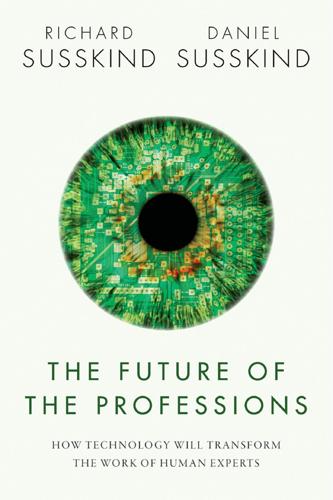
The Future of the Professions: How Technology Will Transform the Work of Human Experts
by
Richard Susskind
and
Daniel Susskind
Published 24 Aug 2015
See Michael Spence, ‘Signaling in Retrospect and the Informational Structure of Markets’, Nobel Prize Lecture, 8 Dec. 2001. 25 Jonathan Koomey et al., ‘Implications of Historical Trends in the Electrical Efficiency of Computing’, Annals of the History of Computing, 33: 3 (2011), 46–54. 26 See ongoing discussions on Kurzweil’s website <www.kurzweilai.net>. Also see Bill Joy, ‘Why the Future Doesn’t Need Us’, Wired (Apr. 2000). Kurzweil checks his own homework in ‘How My Predictions are Faring’, Oct. 2010 <http://www.kurzweilai.net/images/How-My-Predictions-Are-Faring.pdf> (accessed 27 March 2015). 27 See e.g. Joel Garreau, Radical Evolution (2005), and ‘Coming To an Office Near You’, Economist, 18 Jan. 2014. 28 See e.g. the work of Singularity University at <http://singularityu.org> (accessed 23 March 2015). 29 For a clear introduction to the cloud and cloud computing, and a clear indication of its mounting signifiance, see Kuan Hon and Christopher Millard, ‘Cloud Technologies and Services’, in Cloud Computing Law, ed.
…
Jones, Caroline, Beatrice Wasunna, Raymond Sudoi, Sophie Githinji, Robert Snow, and Dejan Zurovac, ‘ “Even if You Know Everything You Can Forget”: Health Worker Perceptions of Mobile Phone Text-Messaging to Improve Malaria Case-Management in Kenya’ <http://www.ft.com> (accessed 23 March 2015). PLoS ONE, 76: 6 (2012): doi: 10.1371/journal.pone.0038636 (accessed 27 March 2015). Joy, Bill, ‘Why the Future Doesn’t Need Us’, Wired (Apr. 2000). Kaku, Michio, The Future of the Mind (London: Allen Lane, 2014). Kaminska, Izabella, ‘More Work to Do on the Turing Test’, Financial Times, 13 June 2014, <http://www.ft.com/> (accessed 23 March 2015). Kaplan, Ari, Reinventing Professional Services (Hoboken, NJ: John Wiley & Sons, 2011).

Wired for War: The Robotics Revolution and Conflict in the 21st Century
by
P. W. Singer
Published 1 Jan 2010
Note: Potter declined an interview. 172 “astonishing robotic creations” Ibid. 172 His dad worked on projects Ibid. 172 “However, there is a slippery slope” Ibid. 173 a work stoppage by key scientists George Friedman and Meredeth Friedman, The Future of War: Power, Technology, and American World Dominance in the Twenty-first Century (New York: Crown, 1996), 45-49. 174 “It is, in some ways, responsible” Bill Joy, “Why the Future Doesn’t Need Us,” in Taking the Red Pill: Science, Philosophy and Religion in The Matrix, ed. Glenn Yeffeth and David Gerrold (Chicago: BenBella Books, 2003), 219. 174 “The experiences of the atomic scientists” Ibid., 221. 174 “a very touchy subject” Illah Nourbakhsh, interview, Peter W. Singer, October 31, 2006. 174 “I stay out of politics” Brian Miller, interview, Peter W.
…
PowerPoint presentation. 192 “I believe that we are the pioneers” Robert Finkelstein and James Albus, “Technology Assessment of Autonomous Intelligent Bipedal and Other Legged Robots” (DARPA, 2004), 230. 192 “nascent stage, set to burst” Brooks, Flesh and Machines, 10-11. 192 “tsunami that will toss our lives” Ibid., 6. 192 I found it repeated See for example Martin van Creveld, “War and Technology,” Footnotes: The Newsletter of FPRI’s Marvin Wachman Fund for International Education, 12, no. 25 (2007), http://www.fpri.org/footnotes/1225.200710.vancreveldwartechnology.html; Williamson Murray, “War and the West,” Footnotes: The Newsletter of FPRI’s Marvin Wachman Fund for International Education, 12, no. 26 (2007), http://www.fpri.org/footnotes/1226.200711.murray.warwest.html. 192 “in something like the position” Thomas K. Adams, “Future Warfare and the Decline of Human Decisionmaking,” Parameters 31, no. 4 (2001): 57. 193 “It is always hard to see” Bill Joy, “Why the Future Doesn’t Need Us,” in Taking the Red Pill: Science, Philosophy and Religion in The Matrix, ed. Glenn Yeffeth and David Gerrold (Chicago: BenBella Books, 2003), 209. 193 While he was a huge supporter Douglas McGray, “The Marshall Plan,” Wired 11.02 (2003), http://www.wired.com/wired/archive/11.02/marshall.html 193 “There is a tendency to talk” As quoted in Richard O.
…
,” American Spectator 34, no. 2 (2001): 40. 415 “a 50 percent chance of survival” Smith, “Science 2001: Net Prophets,” 18. 415 “leapingly, screamingly insane” Joel Garreau, Radical Evolution: The Promise and Peril of Enhancing Our Minds, Our Bodies—And What It Means to Be Human (New York: Doubleday, 2005), 73. 415 “Well, yeah, but I’ve decided” Smith, “Science 2001: Net Prophets,” 18. 416 “In designing software and microprocessors” Bill Joy, “Why the Future Doesn’t Need Us,” in Taking the Red Pill: Science, Philosophy and Religion in The Matrix, ed. Glenn Yeffeth and David Gerrold (Chicago: BenBella Books, 2003), 211. 416 “As one strong AI immediately begets” Kurzweil, The Singularity Is Near, 262. 417 “Evolution, Morpheus, evolution” Robin Hand-son, “Was Cypher Right?

Global Catastrophic Risks
by
Nick Bostrom
and
Milan M. Cirkovic
Published 2 Jul 2008
In the late 1990s Joy began to believe that genetics, robotics, and nanotechnology posed novel apocalyptic risks to human life. These technologies, he argued, posed a different kind of threat because they could self-replicate; guns do not breed and shoot people on their own, but a rogue bioweapon could. His essay 'Why the Future Doesn't Need Us,' published in April 2000 in Wired magazine, called for a global, voluntary 'relinquishment' of these technologies. Greens and others of an apocalyptic frame of mind were quick to seize on Joy's essay as an argument for the enacting ofbans on technological innovation, invoking the 'precautionary principle', the idea that a potentially dangerous technology should be fully studied for its potential impacts before being deployed.
…
The Global Spiral, 8(2). http:/ fmetanexus.netfmagazineftabidf68fidf9930fDefault.aspx 88 Global catastrophic risks J acoby, R. (2005). Picture Imperfect: Utopian Thoughtfor an Anti- Utopian Age (New York: Columbia University Press). Jones, S . (2006). Against Technology: From the Luddites to Neo-Luddism (NY: Routledge). Joy, B . (2000). Why the future doesn't need us. Wired, April. http:/ fwww .wired. comfwiredfarchivef8.04fjoy.htrnl Kahan, D . M . (2008). Two conceptions of emotion in risk regulation. University of Pennsylvania Law Review, 1 56. http :((ssrn.com(abstract=962520 Kaplan, J. (1997). Radical Religion in America: Millenarian Movementsfrom the Far Right to the Children of Noah (Syracuse, NY: Syracuse University Press).
…
Hall, J.S. (2005) Nanofuture: What's Next for Nanotechnology. (New York: Prometheus Books). I S N ( Institute for Soldier Nanotechnologies, Massachusetts Institute of Technology) (2005). Biomaterials and nanodevices for soldier medical technology. http:j jweb.mit. edujisnfresearchjteam04findex.html Joy, B. (2000). Why the future doesn't need us. Wired Magazine, April. http:/ fwww .wired.comfwiredfarchivef8.04fjoy.html Lake, A. (1996). Defining Missions, Setting Deadlines. Defense Issues, 1 1 (14), 1-4. M cCarthy, T. (2005). Molecular nanotechnology and the world system. http:j jwww. mccarthy.cxjWorldSystemj Nanotechnology as global catastrophic risk 503 Mulhall, D. (2002).

The Lights in the Tunnel
by
Martin Ford
Published 28 May 2011
If it broadens to the degree that machines begin to encroach on a substantial fraction of the jobs that support consumers, the viability of capitalism will ultimately be threatened—unless, of course, our economic rules are adapted to reflect the new reality. *[ These issues are beyond the scope of this book. For a good introduction to this area, I’d recommend reading “Why the future doesn’t need us,” an article written by Sun Microsystems co-founder Bill Joy for the April, 2000 issue of Wired Magazine. Web: http://www.wired.com/wired/archive/8.04/joy.html ] About / Contacting the Author Martin Ford is the founder of a Silicon Valley-based software development firm. He has over 25 years experience in the fields of computer design and software development.
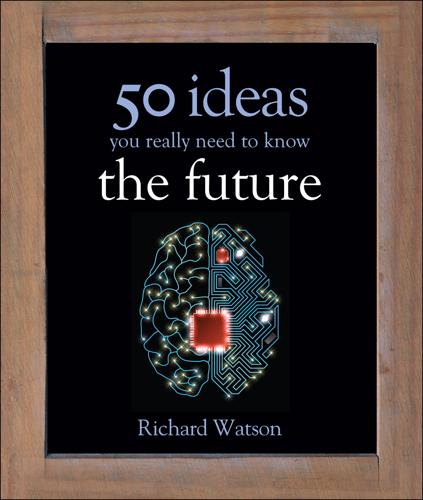
50 Future Ideas You Really Need to Know
by
Richard Watson
Published 5 Nov 2013
As for progress, this word is meaningless in the absence of an objective or goal. What exactly would we be progressing toward, and would such developments be a movement in the right direction? Perhaps such developments will create a new Age of Enlightenment. Maybe we’ll be enslaved by our own creations, or possibly we’ll find out that the future doesn’t need us at all. the condensed idea Merger of man and machine timeline Ma = million years ago 15 Ma Great apes 3–4 Ma First fully bipedal ape 1.3–1.8 Ma Homo erectus 0.2 Ma Homo sapiens 2012 Paris Hilton 2040 Humans 2.0 32 Brain–machine interfaces Forget keyboards, computer mice, gesture-based computing or synthesized speech—we will soon have brain-to-machine interfaces that link the human brain directly to various external devices.

100 Plus: How the Coming Age of Longevity Will Change Everything, From Careers and Relationships to Family And
by
Sonia Arrison
Published 22 Aug 2011
Harris (New York: Springer, 2010), pp. 685–805. 60 Prachi Patel, “Nano Sponge for Oil Spills,” MIT Technology Review, June 2, 2008, www.technologyreview.com/nanotech/20846/. 61 “First Generation Prototype,” SeaSwarm, 2010, http://senseable.mit.edu/seaswarm/ss_prototype.html. 62 Bill Joy, “Why the Future Doesn’t Need Us,” Wired, April 2000, www.wired.com/wired/archive/8.04/joy_pr.html. The idea that nanobots will get out of control and consume all of the earth’s biomass is often referred to as the “gray goo” problem. 63 The Charlie Rose Show, November 26, 2002, www.michaelcrichton.net/video-charlierose-11-26-02.html. 64 See Bill McKibben, Enough: Staying Human in an Engineered Age (New York: Henry Holt, 2003). 65 For more on issue self-replicating technology, or the “gray goo” problem, see Robert A.

Future Crimes: Everything Is Connected, Everyone Is Vulnerable and What We Can Do About It
by
Marc Goodman
Published 24 Feb 2015
But there is a flip side to these advances as well, as we have seen time and time again throughout this book. In the year 2000, Bill Joy, the former chief scientist at Sun Microsystems, provided a glimpse of how bad things could theoretically get in a seminal article published in Wired titled “Why the Future Doesn’t Need Us.” Joy bluntly warned that robotics, genetic engineering, and AI threaten to make human beings “an endangered species” as exponential technologies would eventually grow beyond us and our control. Joy pointed out that all of our twenty-first-century technologies are being democratized, available to anybody with an Internet connection.
…
,” EETimes, May 7, 2012. 91 Not surprisingly, the NSA: Steven Rich and Barton Gellman, “NSA Seeks to Build Quantum Computer That Could Crack Most Types of Encryption,” Washington Post, Jan. 2, 2014; “Quantum Computing, the NSA, and the Future of Cryptography,” On Point with Tom Ashbrook, WBUR. 92 In the year 2000: Bill Joy, “Why the Future Doesn’t Need Us,” Wired, April 2000. Chapter 17: Surviving Progress 1 “If you never break”: Melanie Pinola, “F**k It, Ship It,” Lifehacker, Aug. 14, 2012. 2 “Software is bullshit”: See Quinn Norton’s “Everything Is Broken” for an outstanding analysis of the security challenges posed by insecure computer software code, https://medium.com/. 353 “we are truly living”: “Be Still My Breaking Heart,” Dan Kaminsky’s Blog. 3 But we’re nowhere near perfect: Leah Hoffmann, “Risky Business,” Communications of the ACM 54, no. 11 (2011): 20, doi:10.1145/2018396.2018404. 4 We can make a change: First Research, “Computer Software Industry Profile,” Aug. 25, 2014. 5 Importantly, you are equally as likely: Jane Chong, “Bad Code: Should Software Makers Pay?

The Glass Cage: Automation and Us
by
Nicholas Carr
Published 28 Sep 2014
Noble, Forces of Production: A Social History of Industrial Automation (New York: Alfred A. Knopf, 1984), 144–145. 39.Ibid., 94. 40.Quoted in Noble, Forces of Production, 94. 41.Ibid., 326. 42.Dyson made this comment in the 1981 documentary The Day after Trinity. Quoted in Bill Joy, “Why the Future Doesn’t Need Us,” Wired, April 2000. 43.Matt Richtel, “A Silicon Valley School That Doesn’t Compute,” New York Times, October 23, 2011. Interlude, with Grave Robber 1.Peter Merholz, “ ‘Frictionless’ as an Alternative to ‘Simplicity’ in Design,” Adaptive Path (blog), July 21, 2010, adaptivepath.com/ideas/friction-as-an-alternative-to-simplicity-in-design. 2.David J.
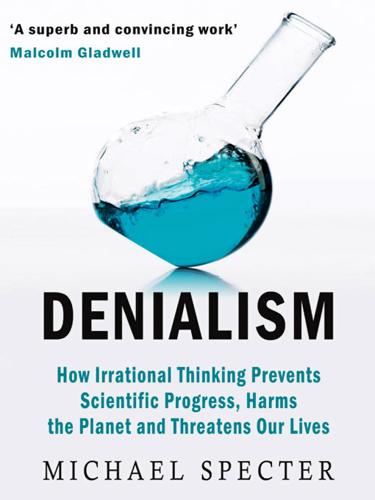
Denialism: How Irrational Thinking Hinders Scientific Progress, Harms the Planet, and Threatens Our Lives
by
Michael Specter
Published 14 Apr 2009
Bill Joy, who founded Sun Microsystems, has frequently called for restrictions on the use of technology. “It is even possible that self-replication may be more fundamental than we thought, and hence harder—or even impossible—to control,” he wrote in an essay for Wired magazine called “Why the Future Doesn’t Need Us.” “The only realistic alternative I see is relinquishment: to limit development of the technologies that are too dangerous by limiting our pursuit of certain kinds of knowledge.” Limit the pursuit of knowledge? When has that worked? Whom should we prevent from having information? And who would be the guardian of those new tools we consider too powerful to use?

The New Class Conflict
by
Joel Kotkin
Published 31 Aug 2014
Paul Joseph Watson, “The Dark Side of Ray Kurzweil’s Transhumanist Utopia,” Infowars.com, June 20, 2013, http://www.infowars.com/the-dark-side-of-ray-kurzweils-transhumanist-utopia; Victoria Woollaston, “We’ll Be Uploading Our Entire MINDS to Computers by 2045 and Our Bodies Will Be Replaced by Machines within 90 Years, Google Expert Claims,” Daily Mail (UK), June 19, 2013; Kurzweil, The Singularity is Near, p. 469. 89. Bill Joy, “Why the Future Doesn’t Need Us,” Wired, April 2000. Chapter 4: The Proletarianization of the Middle Class 1. Crystal Galyean, “Levittown: The Imperfect Rise of the American Suburbs,” U.S. History Scene, August 13, 2012, http://www.ushistoryscene.com/uncategorized/levittown; James Madison, “Federalist No. 10,” in Alexander Hamilton et al., The Federalist, ed.
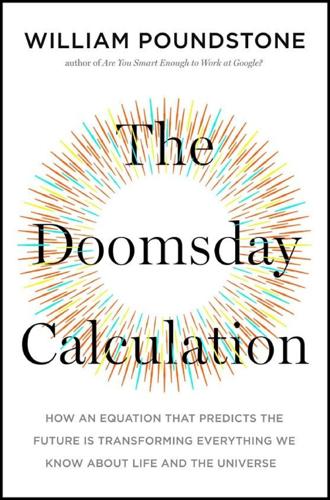
The Doomsday Calculation: How an Equation That Predicts the Future Is Transforming Everything We Know About Life and the Universe
by
William Poundstone
Published 3 Jun 2019
IEEE Transactions on Systems Science and Cybernetics, SSC-4 (1968): 227–241. Jenkins, Alejandro, and Gilad Perez. “Looking for Life in the Multiverse.” Scientific American, January 2010. Jones, Eric M. “‘Where Is Everybody?’: An Account of Fermi’s Question.” Los Alamos, NM: Los Alamos National Laboratory, 1985. Joy, Bill. “Why the Future Doesn’t Need Us.” Wired, April 2000. Kahneman, Daniel, and Amos Tversky. “On Prediction and Judgment.” Oregon Research Institute Bulletin 12, no. 4 (1972). Keynes, John Maynard. A Treatise on Probability. London: Macmillan, 1921. Khatchadourian, Raffi. “The Doomsday Invention.” The New Yorker, November 23, 2015.

The Second Machine Age: Work, Progress, and Prosperity in a Time of Brilliant Technologies
by
Erik Brynjolfsson
and
Andrew McAfee
Published 20 Jan 2014
Charles Perrow, Normal Accidents: Living with High-Risk Technologies (Princeton, NJ: Princeton University Press, 1999); Interim Report on the August 14, 2003 Blackout (New York Independent System Operator, January 8, 2004), http://www.hks.harvard.edu/hepg/Papers/NYISO.blackout.report.8.Jan.04.pdf. 2. Steven Cherry, “How Stuxnet Is Rewriting the Cyberterrorism Playbook,” IEEE Spectrum podcast, October 13, 2010, http://spectrum.ieee.org/podcast/telecom/security/how-stuxnet-is-rewriting-the-cyberterrorism-playbook. 3. Bill Joy, “Why the Future Doesn’t Need Us,” Wired, April 2000, http://www.wired.com/wired/archive/8.04/joy_pr.html. 4. The costs of gene sequencing are dropping even more quickly than those of computing. A comprehensive discussion of the genomics revolution is far beyond the scope of this book; we mention it here simply to highlight that it is real, and likely to bring profound changes in the years and decades to come.

The Transhumanist Reader
by
Max More
and
Natasha Vita-More
Published 4 Mar 2013
While transhumanists all continue to resist “bioconservatives” and other opponents of the transhumanist vision, some emphasize the enormous uncertainties of the future. At the extreme, this has become a focus on the risks that AI or runaway self-replication or other technologies might lead to the extinction of the human race. Bill Joy brought these kinds of dangers to the attention of a wide audience with his 2000 Wired article, “Why the Future Doesn’t Need Us.” The philosophy is enriched by a clear-eyed view of potential risks. At the same time, a heavy and persistent focus on catastrophes can make them appear inevitable and even, in some cases, desirable (the “sweet lemons” phenomenon). So far, unlike Joy, the more risk-focused transhumanists remain supportive of strong yet cautious technological advancement, believing that attempts to block advance will only increase risks.
…
McKibben’s metaphor comparing continued engineering to gluttony misses the point, and ignores the extensive suffering that remains in the human world, which we will be in a position to alleviate through sustained technological progress. Another level of relinquishment, one recommended in Bill Joy’s Wired magazine cover story, “Why the Future Doesn’t Need Us” (Wired 8.04, April 2000), would be to forgo certain fields – nanotechnology, for example – that might be regarded as too dangerous. But such sweeping strokes of relinquishment are equally untenable. Nanotechnology is simply the inevitable end result of the persistent trend towards miniaturization that pervades all of technology.

The Big Nine: How the Tech Titans and Their Thinking Machines Could Warp Humanity
by
Amy Webb
Published 5 Mar 2019
“The IEEE Global Initiative on Ethics of Autonomous and Intelligent Systems.” https://standards.ieee.org/develop/indconn/ec/autonomous_systems.html. Jo, YoungJu, et al. “Quantitative Phase Imaging and Artificial Intelligence: A Review.” Computing Research Repository (2018). doi:abs/1806.03982. Joy, B. “Why the Future Doesn’t Need Us.” Wired, April 1, 2000. http://www.wired.com/wired/archive/8.04/joy.html. Kelly, K. The Inevitable: Understanding the 12 Technological Forces That Will Shape Our Future. New York: Viking, 2016. Kirkpatrick, K. “Battling Algorithmic Bias.” Communications of the ACM 59, no. 10 (2016): 16–17. https://cacm.acm.org/magazines/2016/10/207759-battling-algorithmic-bias/abstract.

Falter: Has the Human Game Begun to Play Itself Out?
by
Bill McKibben
Published 15 Apr 2019
Tyler Cower, Average Is Over (New York: Dutton, 2013) p. 23. 14. Curtis White, We, Robots: Staying Human in the Age of Big Data (Brooklyn, NY: Melville House, 2015), p. 19. 15. Kai-Fu Lee, “The Real Threat of Artificial Intelligence,” New York Times, June 24, 2017. 16. Bill Joy, “Why the Future Doesn’t Need Us,” Wired, April 1, 2000. 17. Sarah Marsh, “Essays Reveal Stephen Hawking Predicted Race of Superhumans,” Guardian, October 4, 2018 18. Dowd, “Elon Musk’s Billion Dollar Crusade.” 19. James Vincent, “Elon Musk Says We Need to Regulate AI Before It Becomes a Danger to Humanity,” theverge.com, July 17, 2017. 20.
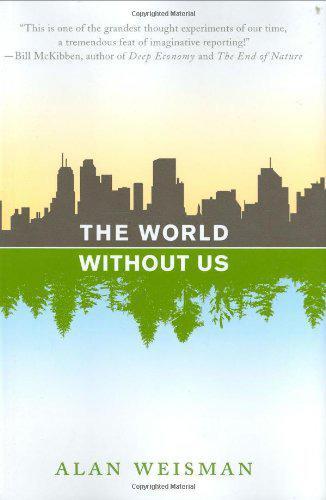
The World Without Us
by
Alan Weisman
Published 5 Aug 2008
Scientia Marina 65 (supp. 2), 2001, 273–81. Jewett, Thomas O. “Thomas Jefferson, Paleontologist.” The Early America Review, vol. 3, no. 2, fall 2000. Jin, Y. G., et al. “Pattern of Marine Mass Extinction Near the Permian-Triassic Boundary in South China.” Science, vol. 289, July 21, 2000. Joy, Bill. “Why the Future Doesn’t Need Us.” Wired, vol. 8, no. 4, April, 2000. Kaiser-Hill Company, L.L.C. “Final Draft: Landfill Monitoring and Maintenance Plan and Post Closure Plan, Rocky Flats Environmental Technology Site Present Landfill.” January 2006, http://192.l49.55.183/NewRelease/PLFMMPlandraftfinal23Jan06l.pdf. Kassam, Aneesa, and Ali Balla Bashuna.
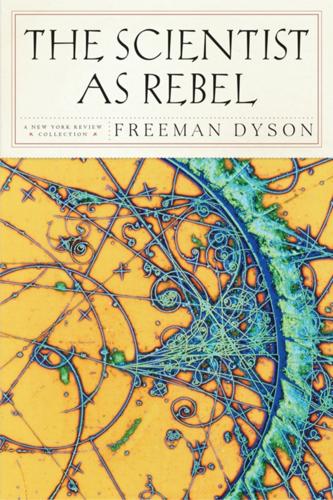
The Scientist as Rebel
by
Freeman Dyson
Published 1 Jan 2006
In particular, when any prohibition of dangerous science and technology is contemplated, one of the costs that must be considered is the cost to human freedom. I call the first point of view precautionary and the second point of view libertarian. In April 2000, Bill Joy, co-founder and chief scientist at Sun Microsystems, a large and successful computer company, published an article in Wired magazine with the title “Why the Future Doesn’t Need Us,” and the subtitle “Our most powerful 21st-century technologies—robotics, genetic engineering, and nanotech—are threatening to make humans an endangered species.” It was a big surprise to see one of the leaders of high-tech industry arguing passionately for a slowing down of technology that might become dangerous.
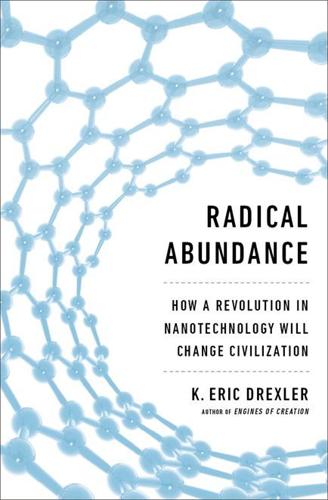
Radical Abundance: How a Revolution in Nanotechnology Will Change Civilization
by
K. Eric Drexler
Published 6 May 2013
Ironically, the popular idea that APM would require impossible atom juggling became a popular criticism among scientists who seemingly neither read the literature nor considered how APM might actually be accomplished. 204a glossy “brochure for the public,” entitled: Nanotechnology: Shaping the World Atom by Atom, Interagency Working Group on Nanoscience, Engineering and Technology (December 1999) (http://www.wtec.org/loyola/nano/IWGN.Public.Brochure/). 204and the NSTC issued a more formal document: National Nanotechnology Initiative: The Initiative and Its Implementation Plan, National Science and Technology Council Committee on Technology Subcommittee on Nanoscale Science, Engineering and Technology (July 2000) (http://nano.gov/sites/default/files/pub_resource/nni_implementation_plan_2000.pdf). 205In the section titled “Definitions”: Sec. 8., Definitions, 21st Century Nanotechnology Research and Development Act, 107th Congress, 2001–2002 (the same definition appears in a series of subsequent bills). 205fna bill was introduced that would strike: Sec. 13., Amendments to Definitions, National Nanotechnology Initiative Amendments Act of 2008, 110th Congress, 2007–2009. 206the 2004 National Nanotechnology Initiative Strategic Plan: National Science and Technology Council Committee on Technology Subcommittee on Nanoscale Science, Engineering and Technology (December 2004) (www.nsf.gov/crssprgm/nano/reports/sp_report_nset_final.pdf). 207published an article on future technologies in Wired magazine: Bill Joy, “Why the Future Doesn’t Need Us,” Issue 8.04 (April 2000): 238–262. 208The principal fear is that it may be possible to create: R. E. Smalley, “Nanotechnology, Education, and the Fear of Nanobots,” in Societal Implications of Nanoscience and Nanotechnology, a report from a National Science Foundation workshop on September 28–29, 2000 (www.wtec.org/nanoreports/nanosi.pdf).

New Laws of Robotics: Defending Human Expertise in the Age of AI
by
Frank Pasquale
Published 14 May 2020
.… I suggested it as a thought experiment at a DARPA [Defense Advanced Research Projects] workshop a few years ago, and one of the military brass present said matter-of-factly, ‘That’s feasible’ ”; The Master Algorithm: How the Quest for the Ultimate Learning Machine Will Remake Our World (New York: Basic Books, 2015), 121. 10. Bill Joy, “Why the Future Doesn’t Need Us,” Wired, April 1, 2000, https://www.wired.com/2000/04/joy-2/. 11. Brad Turner, “Cooking Protestors Alive: The Excessive-Force Implications of the Active Denial System,” Duke Law & Technology Review 11 (2012): 332–356. 12. Michael Schmitt, “Regulating Autonomous Weapons Might Be Smarter than Banning Them,” Just Security, August 10, 2015, https://www.justsecurity.org/25333/regulating-autonomous-weapons-smarter-banning/. 13.

Cities Under Siege: The New Military Urbanism
by
Stephen Graham
Published 30 Oct 2009
The result is another self-perpetuating cycle, since, not surprisingly, the anger and despair of those living in switched-off cities can readily be exploited and radicalized, turning into a willingness to launch terroristic violence against the perpetrators of their plight. 1 Sultan Barakat, ‘City War Zones’, The Urban Age, Spring 1998, 12. 2 Phil Agre, ‘Imagining the Next War: Infrastructural Warfare and the Conditions of Democracy’, Radical Urban Theory, 14 September 2001, available at www.rut.com. 3 Bruce Mau, Massive Change, London: Phaidon, 2003, 3. 4 John Hinkson, ‘After the London Bombings’, Arena Journal 24, 2005, 145–6. 5 John Robb, ‘The Coming Urban Terror’, City Journal, Summer 2007. 6 John Leslie, ‘Powerless’, Wired 7: 4, 1999, 119–83. 7 Bill Joy, ‘Why the Future Doesn’t Need Us’, Wired 8: 4, 2000, 239. 8 Timothy Luke, ‘Everyday Technics as Extraordinary Threats: Urban Technostructures and Nonplaces in Terrorist Actions’, in Graham, ed., Cities, War and Terrorism, 120–136. 9 Hinkson, ‘After the London Bombings’, 145. 10 Luke, ‘Everyday Technics as Extraordinary Threats’. 11 Hinkson, ‘After the London Bombings’, 146. 12 Luke, ‘Everyday Technics as Extraordinary Threats’. 13 Hinkson, ‘After the London Bombings’, 149. 14 Leonie Ansems de Vries, ‘(The War on) Terrorism: Destruction, Collapse, Mixture, Re-enforcement, Construction’, Cultural Politics 4: 2, 185. 15 Vyjayanthi Rao, ‘How to Read a Bomb: Scenes from Bombay’s Black Friday’, Public Culture 19: 3, 567–92. 16 Timothy Luke, ‘Everyday Technics as Extraordinary Threats’. 17 Ibid. 18 See Global Guerrillas.typepad.com, ‘Networked Tribes, Infrastructure Disruption, and the Emerging Bazaar of Violence, an open notebook on the first epochal war of the 21st Century’. 19 Ibid. 20 Noah Shachtman, ‘Taliban Threatens Cell Towers’, Wired Danger Room, 25 February 2008, available at blog.wired.com/defense. 21 See Global Guerrillas, ‘Networked Tribes’. 22 Edward Felker, ‘Airpower, Chaos and Infrastructure: Lords of the Rings’, paper, Maxwell Air Force Base, Maxwell, AL: United States Air War College, Air University, 1998, 14. 23 Mike Davis, ‘Slouching toward Baghdad’, Zmag.org, 26 March 2004. 24 Andrew Wright, ‘Structural Engineers Guide Infrastructure Bombing’, Engineering News Record, 3 April 2003. 25 Walter Rostow, The Stages of Economic Growth: A Non-Communist Manifesto, Cambridge: Cambridge University Press, 1960. 26 David Milne, ‘Our Equivalent of Guerrilla Warfare: Walt Rostow and the Bombing of North Vietnam, 1961–1968’, The Journal of Military History 71, 2007, 169–203. 27 Nils Gilman, Mandarins of the Future: Modernization Theory in Cold War America, Baltimore: Johns Hopkins University Press, 2003, 199. 28 As is generally the case, of course, the increasingly intense aerial annihilation only strengthened the resolve of the North Vietnamese civilians, so bolstering Viet Cong power in the process. 29 Cited in Milne, ‘Our Equivalent of Guerrilla Warfare’. 30 Thomas Friedman, New York Times, columnist 23 April 1999, cited by I.

Architects of Intelligence
by
Martin Ford
Published 16 Nov 2018
RAY KURZWEIL: I’ve written more about the downsides than anyone, and this was decades before Stephen Hawking or Elon Musk were expressing their concerns. There was extensive discussion of the downsides of GNR—Genetics, Nanotechnology, and Robotics (which means AI)—in my book, The Age of Spiritual Machines, which came out in 1999 that led Bill Joy to write his famous Wired cover story in January 2000 titled, Why the Future Doesn’t Need Us. MARTIN FORD: That was based upon a quote from Ted Kaczynski, the Unabomber, wasn’t it? RAY KURZWEIL: I have a quote from him on one page that sounds like a very level-headed expression of concern, and then you turn the page, and you see that this is from the Unabomber Manifesto. I discussed in quite some detail in that book the existential risk of GNR.

Artificial Intelligence: A Modern Approach
by
Stuart Russell
and
Peter Norvig
Published 14 Jul 2019
DARPA requires explainable decisions for its battlefield systems, and has issued a call for research in the area (Gunning, 2016). AI safety: The book Artificial Intelligence Safety and Security (Yampolskiy, 2018) collects essays on AI safety, both recent and classic, going back to Bill Joy’s Why the Future Doesn’t Need Us (Joy, 2000). The “King Midas problem” was anticipated by Marvin Minsky, who once suggested that an AI program designed to solve the Riemann Hypothesis might end up taking over all the resources of Earth to build more powerful supercomputers. Similarly, Omohundro (2008) foresees a chess program that hijacks resources, and Bostrom (2014) describes the runaway paper clip factory that takes over the world.
…
Bag of tricks for efficient text classification. arXiv:1607.01759. Jouppi, N. P., Young, C., Patil, N., Patterson, D. A., et al. (2017). In-datacenter performance analysis of a tensor processing unit. In ACM/IEEE 44th International Symposium on Computer Architecture. Joy, B. (2000). Why the future doesn’t need us. Wired, 8. Jozefowicz, R., Vinyals, O., Schuster, M., Shazeer, N., and Wu, Y. (2016). Exploring the limits of language modeling. arXiv:1602.02410. Jozefowicz, R., Zaremba, W., and Sutskever, I. (2015). An empirical exploration of recurrent network architectures. In ICML-15. Juels, A. and Wattenberg, M. (1996).